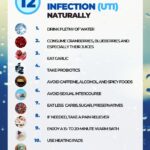Interesting Research on – What No One Ever Told You
 How to Speed Up Healing with Proper Wound Debridement Techniques
How to Speed Up Healing with Proper Wound Debridement Techniques
When you have a wound, whether it’s a small cut or a deep laceration, one of the key factors in the healing process is proper wound debridement. Wound debridement is the process of removing dead or infected tissue from a wound to promote healing. This article will explain the importance of wound debridement and provide you with some techniques to speed up the healing process.
0 Picture Gallery: Interesting Research on – What No One Ever Told You
Why is Wound Debridement Important?
Wound debridement plays a vital role in the healing process by removing any barriers to healing and promoting the growth of healthy tissue. When a wound occurs, the body’s natural response is to send blood cells to the injured area to heal it. However, this process can be hindered if there is dead or infected tissue present. By removing this tissue, you create an environment that is more conducive to healing and reduce the risk of infection and complications.
Techniques for Wound Debridement
There are several techniques for wound debridement, and the choice of technique depends on the type and severity of the wound. It is important to note that wound debridement should only be performed by a healthcare professional or under their supervision. Here are some commonly used techniques:
1. Surgical Debridement: This technique involves using a scalpel or other surgical instrument to remove dead or infected tissue. It is typically performed in an operating room under sterile conditions.
2. Enzymatic Debridement: Enzymatic debridement involves applying a topical enzyme solution to the wound to break down dead tissue. This technique is often used for wounds with thick or hard-to-reach necrotic tissue.
3. Mechanical Debridement: Mechanical debridement is the physical removal of dead tissue from the wound. This can be achieved through techniques such as wet-to-dry dressings or using a high-pressure irrigation device to flush out the wound.
4. Autolytic Debridement: Autolytic debridement relies on the body’s own enzymes to break down dead tissue. It involves applying a moist dressing to the wound and allowing the body’s natural healing process to take place.
5. Biological Debridement: This technique involves the use of sterilized maggots to consume dead tissue in the wound. While it may sound unconventional, maggots have been used for centuries and have proven to be effective in promoting wound healing.
Benefits of Proper Wound Debridement
Proper wound debridement not only helps speed up the healing process but also offers several other benefits. These include:
1. Infection Prevention: Removing dead or infected tissue reduces the risk of infection. By creating a clean environment, you minimize the chances of bacteria entering the wound and causing complications.
2. Improved Blood Flow: Dead tissue can hinder blood circulation to the wound, which is essential for healing. By removing this barrier, you promote better blood flow, ensuring that the wound receives the necessary nutrients and oxygen for healing.
3. Reduced Scarring: Wound debridement helps promote the growth of healthy tissue, which reduces the likelihood of excessive scarring. It encourages the formation of new skin cells, resulting in a smoother and more aesthetically pleasing scar.
4. Faster Healing: By eliminating obstacles to healing, such as dead or infected tissue, proper wound debridement accelerates the overall healing process. This means less time spent dealing with the wound and a quicker return to your daily activities.
Conclusion
Proper wound debridement is essential for promoting healing and preventing complications. Whether it’s surgical debridement, enzymatic debridement, mechanical debridement, autolytic debridement, or biological debridement, each technique plays a crucial role in removing dead or infected tissue. By following these techniques, you can ensure a faster healing process, reduce the risk of infection, and minimize scarring. Remember to always consult a healthcare professional for proper wound care and debridement. With their expertise, you can speed up the healing process and regain your health sooner.
If You Read One Article About , Read This One
This post topic: Pets & Animals



